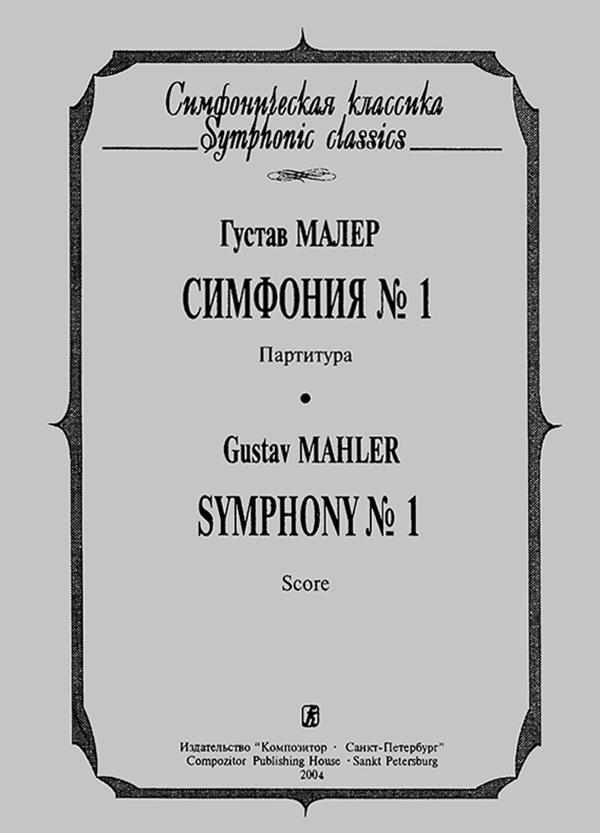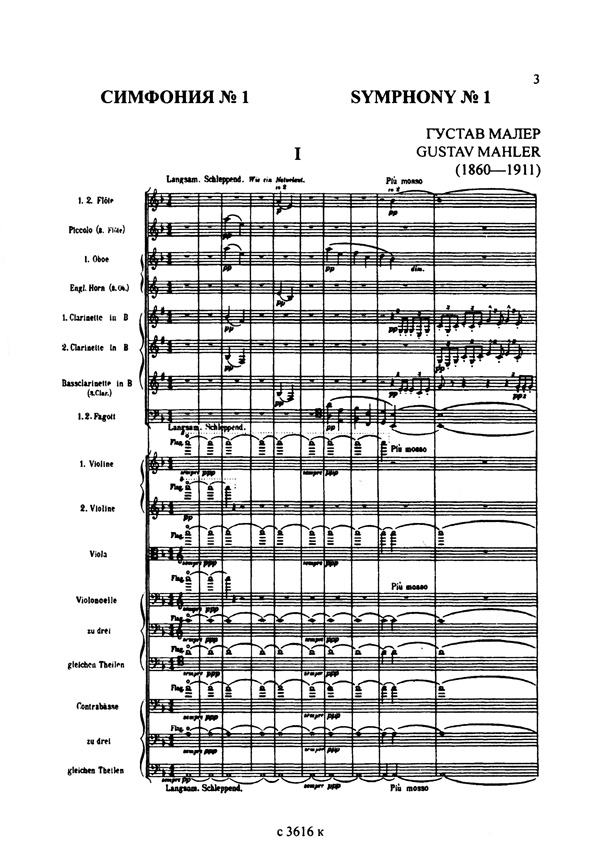
Mahler G. Symphony No1. Pocket Score
- Author:
- Mahler G.
- Author (full):
- Gustav Mahler
- Title (full):
- Symphony No 1. Pocket Score
- Number of pages:
- 172
Gustav Mahler (1860–1911) — the Austrian composer, conductor, opera producer. His creative activity took place in many places. From 1880 he conducted different opera theatres in Austro-Hungary, including the Viennese Court Opera during the period of 1897–1907, from 1907 — in the USA, from 1897 he held performances in Russia.
Mahler is considered to be one of the most eminent and genuine symphonists of the world music history. His creation became the link between the romanticism of the 19th century and the 20th century's expressionism (first of all the New-Viennese school). Such distinguished composers of the 20th century as О. Shostakovich, В. Britten, А. Schnitke were influenced by various aspects of his aesthetic method. The First Symphony was completed by Malher in 1888. Unlike Mahler’s next compositions of this genre it looks the purely instrumental one. The premiere took place on November 20, 1889 in Budapest. The author used to call it the “symphonic роеm”, although it consisted of five movements.
It was in 1893 when Mahler re-made the symphony and entitled it for to help the listeners trying to comprehend it. The name “talent's delusion” was given to it by the listeners after its first performance. The symphony got the title “Titan”, its fourth movement was called “March Funebre in Callot's Manner”. Both cpithets go back to the German classical literature: the first one refers to Jean-Раul’s novel of the зяте вате, the second one to Е. Th. А. Hoffmann. As the listeners and the critics did not change their hearts when the symphony was represented again in Weimar, Mahler decided to take off the titles and programme to the Berlin performance in 1896. The composer also extracted the second movement (its title “Blumine” had been invented by Jean-Paul instead of the word “flora”). The symphony had bееn consisting of four movements since that time till its last performance realized by the New-York symphony orchestra conducted by the author in 1909. It was exactly the version of fourmovements to become the base of the first and last edition in Vienna in 1906, the last one during the composer's life.
The programmatic and autobiographical signs may be discovered in the themes borrowed from the other material. Mahler used the theme from his cycle “Songs of the Wandering Apprentice” (the first, third and fourth movements). The motive parody of the march funebre is based on the old canon “Brother Martin, are you sleeping?” (the other variant was “Prere Jacques”) only accounted in minor tonality. This movement is inspired by the engraving from the drawing by Moritz von Schvind “Hunter's Funeral”, where the animals and birds are wending after the hunter' s coffi а-moaning him hypocritically.
- Author
- Mahler G.
- Author (full)
- Gustav Mahler
- Title (full)
- Symphony No 1. Pocket Score
- Number of pages
- 172

